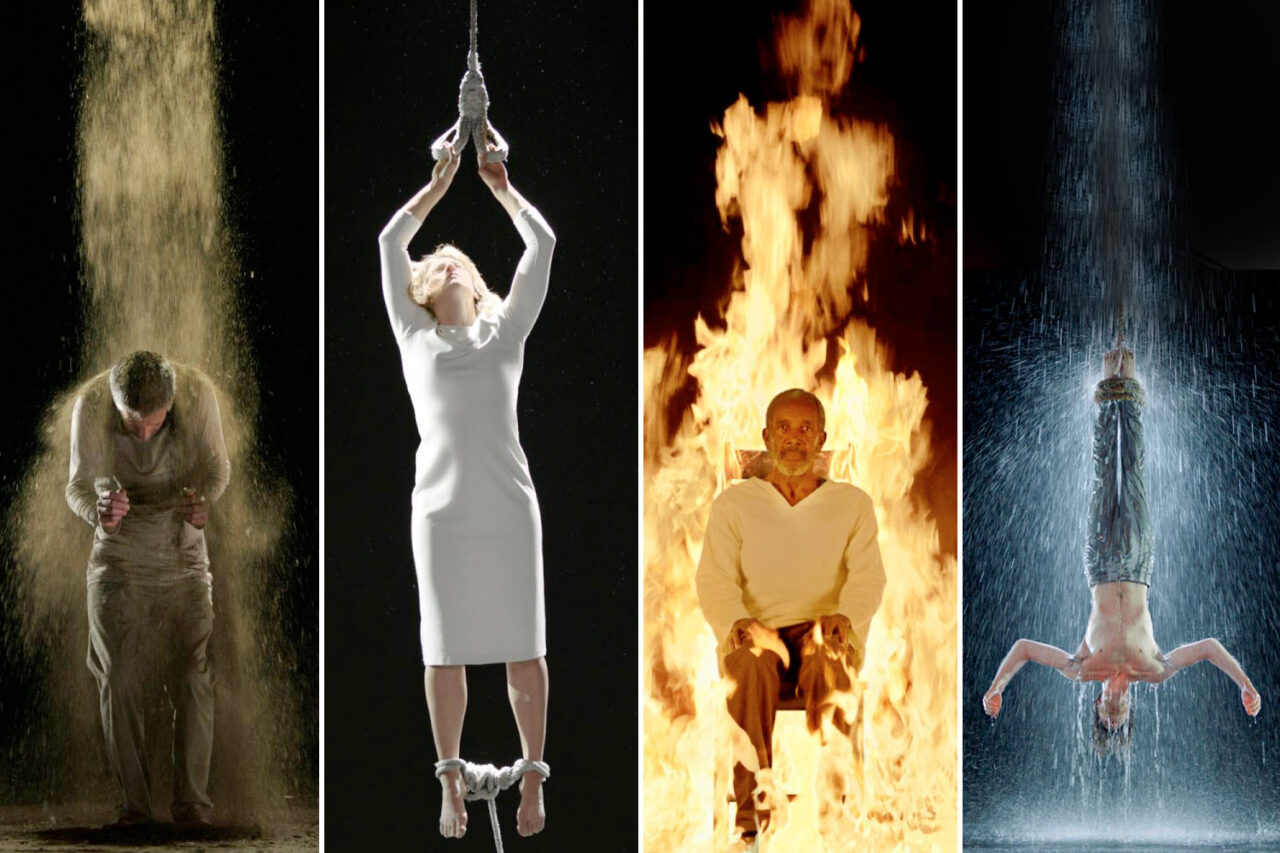ART-PRESENTATION: Bill Viola-Installations
 Bill Viola’s works explore the central themes of human life: birth, death, love, emotion, and spirituality. He has an overarching interest in mystical traditions, especially those of Christianity, Zen Buddhism, and Islam. This openness, which uses the body as a medium for extraordinary experiences, is reflected in nearly all the artist’s sound and video installations, which are captivating for their memorable, transcendent aura.
Bill Viola’s works explore the central themes of human life: birth, death, love, emotion, and spirituality. He has an overarching interest in mystical traditions, especially those of Christianity, Zen Buddhism, and Islam. This openness, which uses the body as a medium for extraordinary experiences, is reflected in nearly all the artist’s sound and video installations, which are captivating for their memorable, transcendent aura.
By Dimitris Lempesis
Photo: Deichtorhallen Hamburg Archive
In “Installations” the solo exhibition by Bill Viola on presentation at Deichtorhallen Hamburg, the artist’s monumental, 10-meter-high video installations transform the architecture of the darkened Hall for Contemporary Art g into a 21st Century cathedral that will simultaneously become an extraordinary stage for the relevance and inspiration of the spiritual dimension in contemporary art today. The exhibition is a profound journey that encourages visitors to ponder the fundamental questions of life and to reflect on their own existence. On presentation are “Nantes Triptych” (1992), “The Greeting” (1995), “Interval” (1995), “The Messenger” (1996), “The Quintet of the Astonished” (2000), “Dolorosa” (2000), “Surrender” (2001), “Catherine’s Room” (2001), “Fire Woman” (2005), “Tristan’s Ascension (The Sound of a Mountain Under a Waterfall)” (2005), “The Innocents” (2007), “Three Women” (2008) and “Martyrs (Earth, Air, Fire, Water)” (2014). In an empty, dark blue space, “The Messenger” (1996) takes the form of a naked man, who slowly emerges from the shallows of an unspecified water space. Pale and closed-eyed, he approaches the surface of the water before he breaks through it and suddenly appears alive in warm light. Deep breaths accompany the process of awakening in image and sound. After a few moments, the man closes his eyes and is withdrawn into the blue nothing until he disappears into the depths of the water. The video loop illustrates the basic elements of human existence – birth, life and death – into a continuum of emergence and perishing. “Tristan’s Ascension (The Sound of a Mountain Under a Waterfall)” (2005), in a bare, dark room is a human body, pulled upwards by an upward flowing waterfall. Symbolically, Viola represents the resurrection of the soul after death. What begins as a “gentle rain” develops into a crackling waterfall. The arms of the lifeless body begin to move and lift up in a mystical way. The rising water cascades seem to animate the body. He rises as if by magic, and hovers upwards, until he disappears from the observer’s field of vision. A specially configured surround sound system enhances the impression of a vertical orientation of the room. “Fire Woman” (2005) according to Bill Viola, shows “A picture in front of the spiritual eye of a dying man”. A woman stands motionless in front of a blazing wall of fire so that only her silhouette is recognizable. After a few minutes the figure slowly moves towards the viewer, lifts her arms and finally falls into the water. The unsteady waves of the now visible water surface spread continuously over the entire image surface, until the wall of fire has completely dissolved into a gentle pattern of pure light. The glowing fire turns into a blue-black color game. In “Catherine’s Room” (2001), 5 screens show a very private view of the everyday life of the protagonist at different times of the day (morning, afternoon, sunset, evening, night). She goes after various activities (yoga exercises, sewing, lighting candles, etc.). The tree in front of the window reveals different seasons. The “Nantes Triptych” (1992), named after its original exhibition site (Musée des Beaux Arts in Nantes), is based on the traditional form of the triptych. Bill Viola combines on the three panels two stations of life: the birth of a child and the death of his own mother. The two representations are connected by a man’s body immersed in water, a metaphor for the course of the life span. The three scenes are accompanied by breath, wine and water sounds. On 2 plasma screens you can see “Surrender” (2001), a woman and a man who are mirrored vertically at the hip and bending toward the mirror axis. Just before reaching the mirror axis, they immerse their heads in water, which makes it clear to the observer not only the direct video recording of a person, but only their reflection on the surface of the water. The dipping into the water creates a wave, which makes the picture blur and makes almost unrecognizable.
Info: Deichtorhallen Hamburg, Sammlung Falckenberg, Phoenix-Hallen, Wilstorfer Straße 71, Tor 2, Hamburg, Duration 2/6-10/9/17, Days & Hours: Tue-Sun 11:00-18:00, www.deichtorhallen.de




